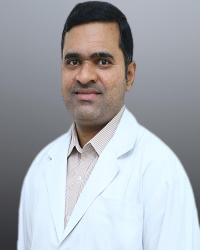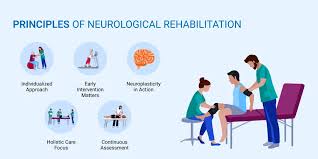Parkinson’s Disease Surgery (Deep Brain Stimulation)
Parkinson's disease (PD) is a neurodegenerative disorder that primarily affects movement. It leads to symptoms like tremors, stiffness, slowness of movement, and balance problems. Deep Brain Stimulation (DBS) surgery is an advanced treatment option for Parkinson's disease when medications no longer provide effective symptom control. DBS involves implanting a small device (similar to a pacemaker) that sends electrical impulses to specific areas of the brain, helping to regulate abnormal brain activity.
Who Needs Deep Brain Stimulation (DBS)?
Deep Brain Stimulation is considered for Parkinson’s disease patients who meet the following criteria:
- Medications are no longer effective in controlling Parkinson's symptoms or cause intolerable side effects.
- Symptoms are severely impacting quality of life, including tremors, rigidity, or difficulty with movement.
- The patient is in the advanced stages of Parkinson's disease, where motor symptoms become more pronounced and uncontrollable.
- Cognitive function is still intact, as DBS is more effective for those without severe dementia.
Symptoms of Parkinson's Disease
The symptoms of Parkinson's disease typically develop gradually and can vary from person to person. Common symptoms include:
- Tremors: Involuntary shaking, usually starting in the hands or fingers.
- Bradykinesia (Slowness of Movement): A gradual reduction in movement speed, making it difficult to initiate or complete everyday tasks.
- Muscle Rigidity: Stiffness in the muscles, leading to discomfort and limited movement.
- Postural Instability: Impaired balance and coordination, which may lead to falls.
- Speech Changes: Soft or slurred speech, making communication difficult.
- Handwriting Changes (Micrographia): Writing may become small and difficult to read.
- Facial Masking: Reduced facial expressions, making the individual appear less animated or unemotional.
- Shuffling Walk: A stooped posture with small steps and reduced arm swing.
- Sleep Disturbances: Difficulty sleeping or experiencing restless legs syndrome.
- Depression and Anxiety: Mental health challenges that often accompany Parkinson's disease.
- Cognitive Impairment: Difficulty with concentration, memory, and problem-solving.
Causes of Parkinson's Disease
The exact cause of Parkinson’s disease is unknown, but it’s believed to be due to a mix of genetic and environmental factors:
- Genetics:
Certain genetic mutations can increase the risk, though these are rare.
- Environmental Toxins:
Long-term exposure to pesticides and chemicals may raise the risk, especially in farming communities.
- Age:
Parkinson’s typically develops in people over 60, though it can occur earlier (early-onset Parkinson’s).
- Gender:
Men are more likely to develop Parkinson's than women.
- Dopamine Loss:
Parkinson’s is caused by the death of dopamine-producing neurons in the brain, which affects movement control.
- Lewy Bodies:
Abnormal protein deposits called Lewy bodies form in the brain, contributing to nerve cell damage.
- Head Injury:
Repeated head trauma may increase the risk of developing Parkinson’s later in life.
- Oxidative Stress:
Damage from free radicals and chronic brain inflammation can accelerate neuron degeneration.
- Mitochondrial Dysfunction:
Problems with the brain’s energy-producing cells may lead to Parkinson’s.
Other Conditions:
Stroke, brain tumors, or infections affecting the brain may also cause Parkinson’s-like symptoms.
Key Benefits of Deep Brain Stimulation (DBS) Surgery
- Improvement in motor symptoms: Reduces tremors, rigidity, and bradykinesia (slowness of movement).
- Reduced medication dependency: Many patients are able to reduce their reliance on Parkinson’s medications, leading to fewer side effects.
- Enhanced quality of life: Patients often experience significant improvements in daily activities, mobility, and overall well-being.
- Reversibility: DBS is reversible and can be adjusted or stopped if necessary.
- Fewer side effects compared to medications: DBS has the potential to cause fewer side effects than long-term use of Parkinson’s medications.
Step-by-Step Process for Parkinson’s Disease Surgery (Deep Brain Stimulation)
- Initial Consultation & Assessment:
- The first step involves an in-depth consultation with a neurologist and a neurosurgeon specializing in movement disorders. They will review the patient's medical history, assess symptoms, and conduct imaging studies (such as MRI or CT scan) to determine eligibility for DBS surgery.
- Pre-Surgical Preparation:
- Before surgery, the patient may undergo further tests to ensure they are fit for surgery. These may include blood tests, heart monitoring, and assessments of cognitive function.
- Surgical Procedure:
- The surgery is performed in two stages: implantation of electrodes in the brain, followed by the placement of the pulse generator. The patient may be awake during the first part to monitor immediate responses to electrical stimulation.
- Post-Surgery Recovery & Rehabilitation:
- After surgery, the patient will be monitored in the hospital for a few days to ensure there are no complications. The pulse generator will be activated and adjusted during follow-up visits. Physical therapy and regular follow-ups with the neurologist are crucial for successful outcomes.
- Ongoing Monitoring & Adjustments:
- Regular follow-up appointments are essential to adjust the settings of the DBS device to ensure maximum benefit. Medication doses may also be adjusted based on the effectiveness of DBS.
Why Choose Healtour Solutions for Parkinson’s Disease Surgery (DBS)?
- World-Class Facilities: We connect you with top hospitals and advanced medical centers in India offering state-of-the-art DBS surgery.
- Experienced Specialists: Our network includes leading neurologists, neurosurgeons, and DBS experts with years of experience in treating Parkinson’s disease.
- Affordable and High-Quality Treatment: DBS surgery in India offers world-class treatment at a fraction of the cost compared to Western countries.
- Comprehensive Care: From initial consultation to post-surgical rehabilitation, we provide comprehensive care and support throughout your treatment journey.
- Customized Treatment Plans: We offer personalized treatment plans tailored to each patient's specific needs and medical condition.
10 Frequently Asked Questions (FAQs)
- What is Deep Brain Stimulation (DBS)?
DBS is a surgical procedure that involves implanting a device that sends electrical impulses to specific parts of the brain to control symptoms of Parkinson’s disease, such as tremors and stiffness.
- How effective is DBS surgery for Parkinson’s disease?
DBS can significantly reduce symptoms of Parkinson’s disease, improving mobility, reducing tremors, and enhancing quality of life. However, results vary from patient to patient.
- Who is a candidate for DBS surgery?
DBS is considered for patients whose Parkinson’s disease symptoms are no longer adequately controlled with medication or whose quality of life is severely impacted.
- Is DBS surgery safe?
DBS is generally safe, but, like any surgery, it carries some risks, such as infection, bleeding, and possible complications related to brain surgery.
- What is the recovery time after DBS surgery?
Recovery time varies, but most patients can return to their normal activities within a few weeks, though they may need to follow up for adjustments to the DBS settings.
- How long does the DBS device last?
The battery of the DBS device typically lasts 3–5 years, after which it may need to be replaced in a minor procedure.
- Will I need to continue taking Parkinson’s medication after DBS surgery?
Many patients are able to reduce their medication intake after DBS surgery, though some may still need to take lower doses of medication.
- Can DBS help with non-motor symptoms of Parkinson’s disease?
DBS primarily targets motor symptoms, but it may also provide some improvement in non-motor symptoms such as sleep disturbances and mood changes.
- Is DBS covered by insurance?
Most health insurance policies cover DBS surgery, but it's important to check with your provider for specific coverage details.
How do I get started with DBS surgery through Healtour Solutions?
Contact Healtour Solutions today to schedule a consultation with leading Parkinson’s specialists and begin your journey toward effective treatment.




